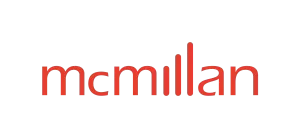- within Intellectual Property topic(s)
- within Intellectual Property topic(s)
- within Transport and Tax topic(s)
- with Senior Company Executives, HR and Finance and Tax Executives
- with readers working within the Accounting & Consultancy, Banking & Credit and Insurance industries
Choosing a "brand name"1 for prescription drugs in Canada is not just about creativity or marketing appeal – it is a careful balance between legal and regulatory requirements. On the one hand, the brand name must qualify for trademark protection; on the other hand, it must meet Health Canada's approval standards. These two requirements can conflict, creating challenges for pharmaceutical brand development.
In this bulletin, we outline key challenges and best practices when naming prescription drugs in Canada, along with tips for global brand strategies.
Health Canada Brand Name Approval
In Canada, if you are seeking approval for a new prescription drug, you will need to submit your proposed brand name to Health Canada as part of the drug approval process.2 The brand name is reviewed as part of Health Canada's overall evaluation; it is not a separate or optional step.
Before submitting the proposed brand name to Health Canada, you will want to assess whether the proposed brand name could be mistaken for other health products authorized for use in Canada. This assessment should focus on whether the names have orthographic similarities when written or similar phonetics when spoken.3
The brand name review process consists of two steps:
- initial brand name review by the applicant – you assess the proposed brand name using Health Canada's criteria4 to determine whether the proposed name may be misleading. If applicable, you also perform a "Look-Alike, Sound-Alike" (LASA) assessment5 to determine whether the proposed band name could be confused with an existing health product authorized for use in Canada; and
- Health Canada review – after you submit a report summarizing your findings from the first step to Health Canada, Health Canada will review the report, search the proposed name against its databases, and may request additional information before deciding whether the proposed name is acceptable.6
Common reasons why Health Canada may reject a proposed name include the following:
- the proposed name is too similar to the brand name of another authorized drug;
- the proposed name suggests misleading therapeutic implications; or
- the proposed name conflicts with international non-proprietary names (INNs).7
Once a brand name is approved, it should be displayed in accordance with Health Canada's guidance document on Labelling of Pharmaceutical Drugs for Human Use.8 In particular, the brand name should appear on all product labels clearly, consistently, and without alterations. Any changes to the approved brand name will require re-approval by Health Canada.9
Trademark Availability
As with any trademark, a trademark clearance search should be performed on a proposed brand name for a prescription drug. A trademark clearance search is useful in assessing whether the proposed brand name is "distinctive"10 and not confusing with a trademark already in use or registered by another person in association with the same or similar goods and services. If a proposed brand name lacks distinctiveness or is confusing with an existing trademark, it may not be registrable or available for use as a trademark in Canada.
It is important to note that even brand names approved by Health Canada can still face challenges under Canadian trademark law. For example, in Novartis AG v. Biogen Inc.,11 Novartis alleged that the respondents' use of the trademark BYOOVIZ in association with an ophthalmologic drug infringed on Novartis' rights in its prior registered trademark BEOVU. Both the BEVOU drug and the BYOOVIZ drug were approved by Health Canada to treat neovascular age-related macular degeneration. Novartis argued that Health Canada had expressed concern about the similarity between BEOVU and BYOOVIZ, though it ultimately approved the latter. Despite this, the Federal Court found the marks confusingly similar, held that the respondents' use of BYOOVIZ infringed Novartis' rights, and granted a permanent injunction to restrain further use of the BYOOVIZ mark by the respondents.
This case highlights the interplay between regulatory and trademark processes in drug naming, and how approval by one regulatory authority does not guarantee success before the other. Seeking Health Canada's approval for a new brand name could be a commercially disruptive and costly exercise.
Clearance Strategies: Aligning Regulatory and Trademark Requirements
Concurrently satisfying the requirements of the Health Canada regulatory regime and the requirements under the Trademarks Act can be challenging, as each regime serves a different purpose. Therefore, it is important that the two processes run in parallel, and not in sequence. For example, consider:
- conducting a comprehensive Canadian trademark clearance search;
- concurrently performing a Health Canada screening to identify any regulatory red flags;
- filing multiple candidate names for trademark registration and have back-up options;12
- filing trademark applications in advance of seeking Health Canada approval; and
- adopting a defensive trademark filing strategy13 to protect unused options in relevant markets.
Additional Strategies: Thinking Beyond Canada
If you plan to use the same brand name in different jurisdictions, it is important to plan ahead. Trademarks laws and regulatory rules related to naming prescription drugs differ across jurisdictions. In jurisdictions where English or French is not the primary language, you should also take into account legal or marketing issues related to the translation and/or transliteration of the proposed brand name. For example, it is possible that a proposed brand name carries negative connotations in the local linguistic or cultural context.
Ideally, your marketing, regulatory, and trademark strategies are coordinated across all jurisdictions you plan to enter.
Conclusion
The intersection of trademark law and drug regulation creates unique challenges for pharmaceutical companies trying to secure brand names for prescription drugs. Starting the processes early and aligning legal and regulatory strategies is key to reduce the risk of costly name rejections and rebranding. If you wish to expand beyond Canada, a coordinated, international clearance and filing strategy is ideal.
As a national firm with strong global connections, our team of legal professionals provides integrated IP, regulatory, and commercial advice to support clients with brand development and commercialization in Canada and internationally.
Footnotes
1. The term "brand name" is defined in the Food and Drug Regulations, CRC, c 870, C.01.001(1).
2. Food and Drug Regulations, CRC, c 870, C.01.014.1.
3. Ibid, C.01.014.1(2)(o).
4. See Health Canada, Guidance Document for Industry – Review of Drug Brand Names (Ottawa, Health Canada, 13 June 2015), ["Brand Name Guidance"., at s 2.2 which sets forth the initial brand name review criteria.
5. Brand Name Guidance, supra note 4, s 2.3.
6. Brand Name Guidance, supra note 4, s 2.
7. Brand Name Guidance, supra note 4, s 2.2.
8. Health Canada, Guidance Document: Labelling of Pharmaceutical Drugs for Human Use (Ottawa: Health Canada, 13 June 2015).
9. Ibid, s 3.4.1.
10. Trademarks Act, RSC, 1985, c T-13, s 2.
11. Novartis AG v Biogen Inc., 2024 FC 52, (appellate decision pending).
12. Health Canada allows for a maximum of 2 brand names to be submitted a time of filing for submissions of 180 days or greater that require a brand name assessment. See Government of Canada, "Frequently Asked Questions – Guidance Document for Industry – Review of Drug Brand Names" (15 July 2015).
13. Defensive filing is a filing strategy where a trademark owner registers their mark for goods or services they do not currently offer, but might in the future, or to prevent others from registering similar marks for those goods or services. These filings are often used to prevent potential infringers or to protect a brand's reputation from dilution.
The foregoing provides only an overview and does not constitute legal advice. Readers are cautioned against making any decisions based on this material alone. Rather, specific legal advice should be obtained.
© McMillan LLP 2025





